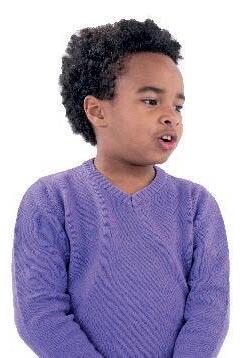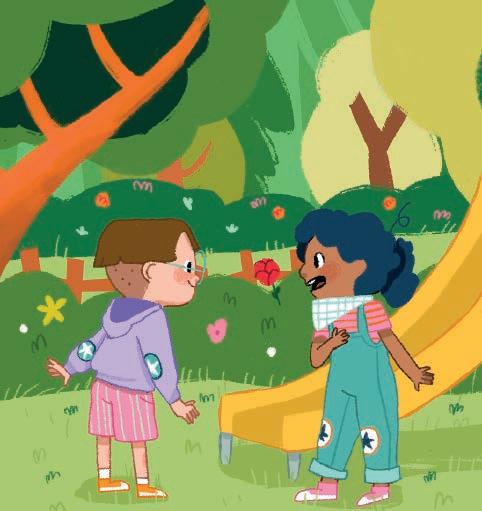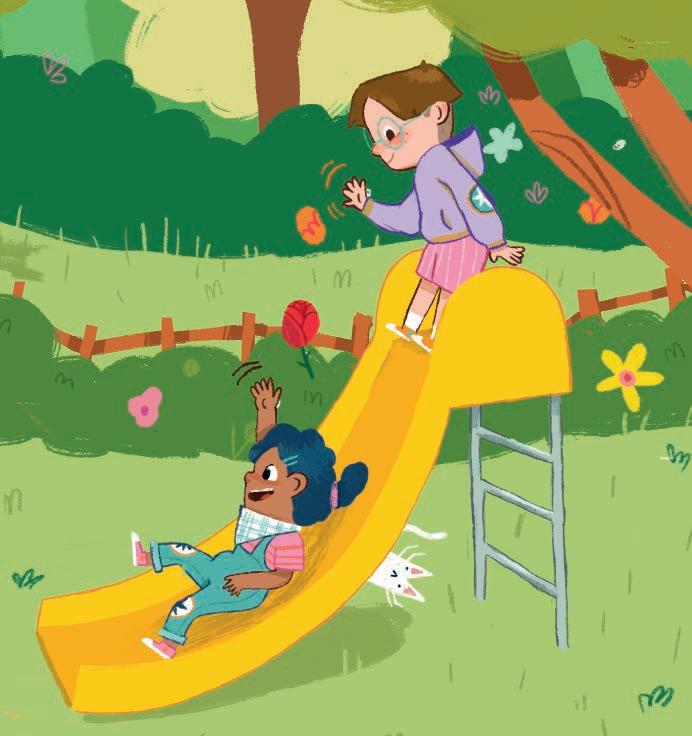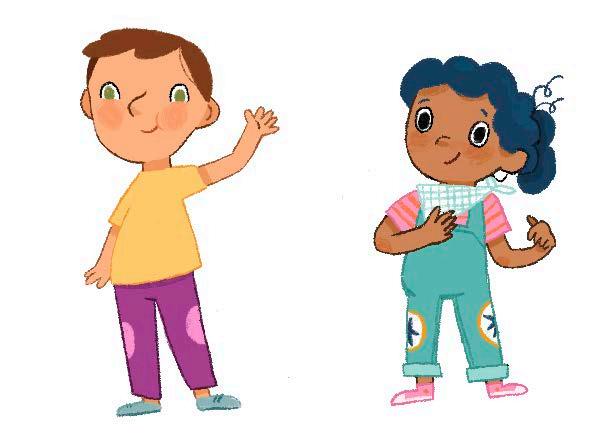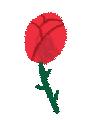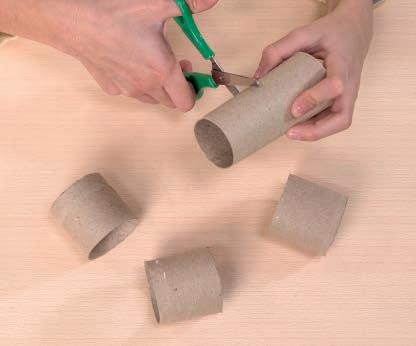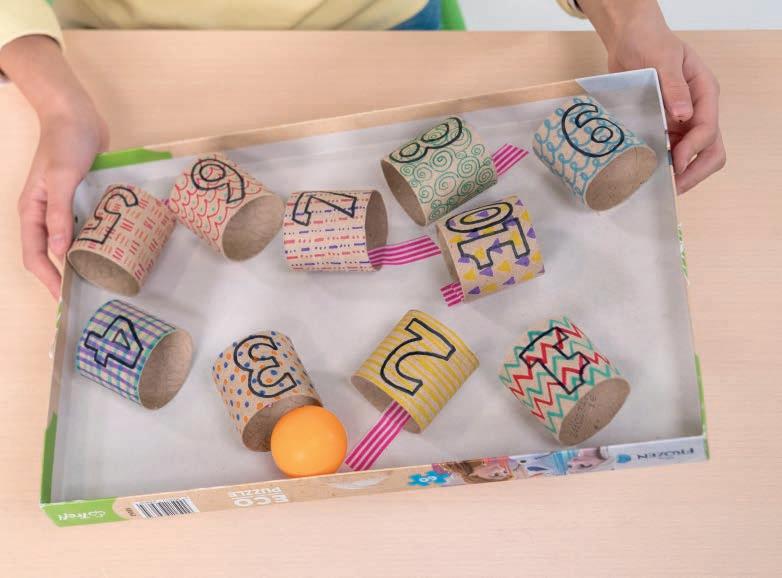GAEL A LBA Y I nicial 1


CURSO DE ESPAÑOL PARA NIÑAS Y NIÑOS
VOCABULARY
LO S N Ú M E R O S
p. 18, 19
C A N TA Y P R A C T I C A p. 20, 21
• Numbers from 1-10. • Practice listening comprehension and pronunciation.
• Exercise memory, attention, and spatial awareness.
• Review numbers 1-10. • Practice fine motor skills development.
• Ask and tell age: Tengo… años. • Practice listening comprehension and pronunciation. • Reinforce vocabulary through Total Physical Response activities.
GRAMMAR AND COMMUNICATION
E L CÓ M I C
En el parque p. 22, 23
C A N TA Y P R A C T I C A
p. 24, 25
• Learn the vocabulary in context. • Stimulate image-based reading comprehension. • Say hello and goodbye: Hola, Adiós • Introduce myself.
• Say my name and ask for someone’s name: Me llamo… ¿Y tú?
•The verb tener. • Share and ask age: Tengo… años.
• Say my name and ask for someone’s name. • Practice listening comprehension and pronunciation. • Practice fine motor skills development.
CROSS-CURRICULAR CONTENT
• Develop logical and mathematical skills: identify, count, and categorize elements.
p. 26
REVIEW
p. 27
HANDS-ON ACTIVITIES
CON LAS MANOS
1, 2, 3… ¡A jugar!
p. 28-29
• Do a creative activity and work on fine motor skills. • Make a presentation to review how to say hello and goodbye. • Review pronunciation.
• Develop creativity. • Work on fine motor skills, develop coordination and balance. • Review numbers 1-10 and practice numerical sequences.
• Develop civic awareness: reuse materials and recycling.
ARTISTIC AND CULTURAL CONTENT
DESCUBRIR EL MUNDO DESCUBRIR EL MUNDO
El cumpleaños
p. 30, 31
•Identify the common elements of a birthday party. • Learn the birthday song in Spanish.
COMMUNITY AND CITIZENSHIP
¡c r ec e mos!
Digo hola y adiós
p. 32, 33
RECORTABLES
p. 89
• Practice fine motor skills development. • Understand the importance of saying hello and goodbye: Hola y Adiós.
PEGATINAS
p. 104
W O R K B O O K
Unidad 1
VOCABULARY
LO S CO LO R E S p. 36, 37
C A N TA Y P R A C T I C A
p. 38, 39
• Colors: rojo, amarillo, naranja, verde, azul, lila, rosa, marrón, negro, blanco. • Practice listening comprehension and pronunciation.
• Exercise memory, attention, and spatial awarenes.
• Review the colors. • Practice fine motor skills development. • Practice listening comprehension and pronunciation. • Reinforce vocabulary through identification and repetition activities.
GRAMMAR AND COMMUNICATION
E L CÓ M I C
La clase de arte p. 40, 41
C A N TA Y P R A C T I C A p. 42, 43
• Learn the vocabulary in context. • Stimulate image-based reading comprehension. • Express preferences: ¡Qué bonito/a…!, Es mi color favorito.
• Say thank you and respond: ¡Gracias!, De nada. • Express needs using the verb tener: ¿Tienes azul?
• Review the colors. • Express preferences and ask for other’s preferences: ¿Cuál es tu color favorito? • Practice listening comprehension and pronunciation. • Practice fine motor skills and oral communication abilities.
CROSS-CURRICULAR CONTENT
• Experiment and mix colors to create other colors. • Elements of the weather and the environment: descubrir el arcoíris, el sol y la lluvia.
p. 44
REVIEW
ÍNDICE U2
p. 45
HANDS-ON ACTIVITIES
CON LAS MANOS
Bingo de colores
p. 46, 47
• Review how to express and ask about preferences. • Practice fine motor skills and pronunciation. • Practice oral communication abilitiesl.
• Develop creativity. • Practice fine motor skills and listening comprehension. • Review the colors • Develop civic awareness: reuse materials and recycling.
ARTISTIC AND CULTURAL CONTENT
DESCUBRIR EL MUNDO
DESCUBRIR EL MUNDO
Alebrijes de México
p. 48, 49
• Encourage an appreciation for the arts and develop artistic competence. •Learn about a typical element of traditional Mexican craftsmanship: los alebrijes. • Practice creativity through the concept of imaginary creatures.
• Develop observation and listening comprehension skills and identify colors.
• Develop creativity and oral expression: pinto y presento mi alebrije.
COMMUNITY AND CITIZENSHIP
¡c r ec e mos!
Comparto mis cosas
p. 50, 51
RECORTABLES
p. 91, 93
• Understand the importance of sharing. • TDevelop observational and critical thinking skills. • Develop a sense of responsibility and empathy toward other.
PEGATINAS p. 105
W O R K B O O K Unidad 2
VOCABULARY
LO S Ú T I L E S
E S CO L A R E S pp. 54, 55
C A N TA Y P R A C T I C A
pp. 56, 57
p. 52
• School supplies: mochila, libro, cuaderno, estuche, lápiz, goma, tijeras, pegamento, lápices de colores. • Practice listening comprehension and pronunciation. • Exercise memory, attention, and spatial awareness.
• Review the school supplies. • Develop phonetic awareness and pronunciation by dividing words into syllables. • Enhance listening comprehension and reinforce vocabulary through Total Physical Response activities. • Improve coordination skills.
GRAMMAR AND COMMUNICATION
E L CÓ M I C
Una sorpresa en la mochila pp. 58, 59
C A N TA Y P R A C T I C A pp. 60, 61
• Learn the vocabulary in context. • Stimulate image-based reading comprehension. • Express preferences: ¡Qué bonito/a !, Mi color favorito es… • Ask and express location and distance: ¿Dónde está…? Está aquí / allí.
• Express ownership: Mi mochila, Tu estuche.
• Review the school supplies. • Express ownership. • Develop spatial awareness: ask and express location and distance. • Practice listening comprehension and pronunciation.
CROSS-CURRICULAR CONTENT
p. 62
REVIEW
p. 63
HANDS-ON ACTIVITIES
CON LAS MANOS
¿Dónde está?
pp. 64, 65
• Practice listening comprehension and fine motor skills. • Develop spatial skills, orientation, and the concept of distance: cerca, lejos • Observe and become familiar with the personal environment and the space around us.
• Review vocabulary: Los útiles escolares, los colores y los números.
• Practice listening comprehension and pronunciation. • Develop attention and fine motor skills and hand-eye coordination.
• Develop creativity. • Work on fine motor skills, develop coordination and balance.
ARTISTIC AND CULTURAL CONTENT
DESCUBRIR
EL MUNDO
EL MUNDO DESCUBRIR
Federico Uribe
pp. 66, 67
• Develop cultural and artistic competence: learn about a Colombian artist. • Observe a work of art and practice critical thinking skills. • Foster creativity and an appreciation for the arts.
COMMUNITY AND CITIZENSHIP
¡c r ec e mos!
Respeto mis útiles
pp. 68, 69
RECORTABLES
pp. 95, 97, 99
• Understand the importance of taking care of our things. • Practice observation and critical thinking skills. • Foster a sense of responsibility.
• Encourage organization and orderliness.
PEGATINAS
p. 108
Unidad 3
VOCABULARY
ANIMALES MARINOS
p. 72, 73
C A N TA Y P R A C T I C A
p. 74, 75
• Marine animals: pez, tiburón, cangrejo, pulpo, delfín, ballena, tortuga, estrella de mar. • Practice listening comprehension and pronunciation.
• Exercise memory, attention, and spatial awareness.
• Review marine animals. • Develop bodily awareness and coordination, and reinforce vocabulary through Total Physical Response activities. • PPractice listening comprehension and pronunciation.
GRAMMAR AND COMMUNICATION
E L CÓ M I C
¿Te gustan los cangrejos?
p. 76, 77
C A N TA Y P R A C T I C A
p. 78, 79
• Learn the vocabulary in context. • Stimulate image-based reading comprehension. • Express preferences: Me gustan las tortugas • Express dislike: No me gustan los cangrejos. • Ask and express location and distance: ¿Dónde está(n)? Aquí / Allí.
• Review colors and marine animals. • Express preferences and habitual actions. • Identify likes and foster observation skills. • Develop fine motor skills, listening comprehension, and pronunciation.
CROSS-CURRICULAR CONTENT
• Identify aquatic and terrestrial animals and recognize their habitats.
• Promote environmental education and care for the natural environment.
p. 80
REVIEW
p. 81
HANDS-ON ACTIVITIES
CON LAS MANOS
Mural de animales marinos
p. 82, 83
• Develop relational skills.
• Review vocabulary related to marine animals. • Develop relational skills. • Foster oral interaction: express preferences. • Work on emotional education: identify and express emotions. • Practice oral expression and pronunciation
• Practice vocabulary related to marine animals. • Train motor coordination, stimulate creativity, and foster imagination. • Practice oral expression and interaction through teamwork.
ARTISTIC AND CULTURAL CONTENT
DESCUBRIR EL MUNDO
DESCUBRIR EL MUNDO
El animal más grande del mundo
p. 84, 85
• Learn about the blue whale and some of its main characteristics. • Practice listening comprehension. • Develop observational and identification skills.
• Practice fine motor skills and review numbers.
COMMUNITY AND CITIZENSHIP
¡c r ec e mos! Limpio y reciclo
p. 86, 87
RECORTABLES
p. 101
• Develop civic awareness: caring for the environment, a sense of responsibility, empathy, respect, and awareness about the future.
• Understand the importance of recycling and not littering.
PEGATINAS
p. 109
W O R K B O O K
Unidad 4


1, 2 , 3 , ¡










